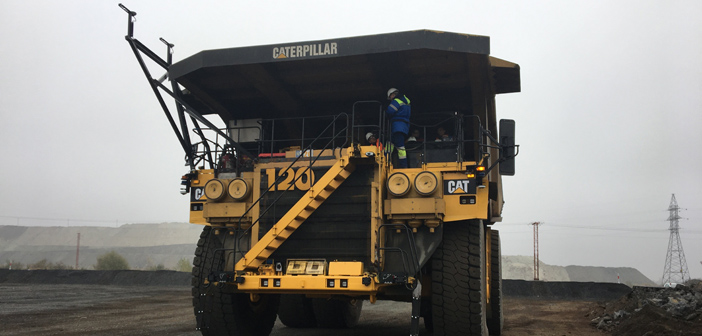Industrial vehicle automation specialist Autonomous Solutions, Inc. (ASI) has improved an algorithm for autonomous vehicles to detect drop-offs and other large negative obstacles often found in the environments in which automated off-road vehicles operate.
“ASI has developed a method for mapping point cloud occlusions in real time,” said Taylor Bybee, perception tech lead at ASI. “This provides additional accuracy and safety when integrated into an autonomous vehicle obstacle detection and avoidance system.”
The occlusion mapping algorithm has three main components. The first is a sensor field of view (FOV) model that describes what obstacles the sensors are expected to detect. This component is designed for point cloud sensors such as 3D lidar, Flash lidar, structured light, and stereo cameras.
Second, an occlusion map is maintained and updated using the sensor FOV model and current sensor data to provide a probabilistic estimate on areas that have not been detected within the sensor FOV.
The third component is the integration of the occlusion map into an autonomous vehicle navigation system. It is designed to work with and complement existing obstacle detection and avoidance systems.
Application of this new technology is said to be useful in settings with dump edges at mine sites, steep road edges, canals, ditches, hills or stairs for indoor or urban environments.
In other news, the company’s ASI Mining subsidiary has started work on a project in Ukraine to retrofit and automate a fleet of 15 haul trucks (pictured) at the Ferrexpo Yeristovo Mine (FYM).
“This project is one of the first major autonomous haulage deployments in Eastern Europe. It represents a major milestone for the accessibility of automation at sites across the world,” said Patrick Hald, general manager, ASI Mining. “Autonomous mining is no longer a luxury available only to the largest mines.”
FYM anticipates the autonomous mining fleet will deliver significant safety benefits to employees, particularly by eliminating fatigue-induced accidents. The improved safety benefits will also be complemented by expected improvements in productivity and better control over the quality of the company’s ore mix.


